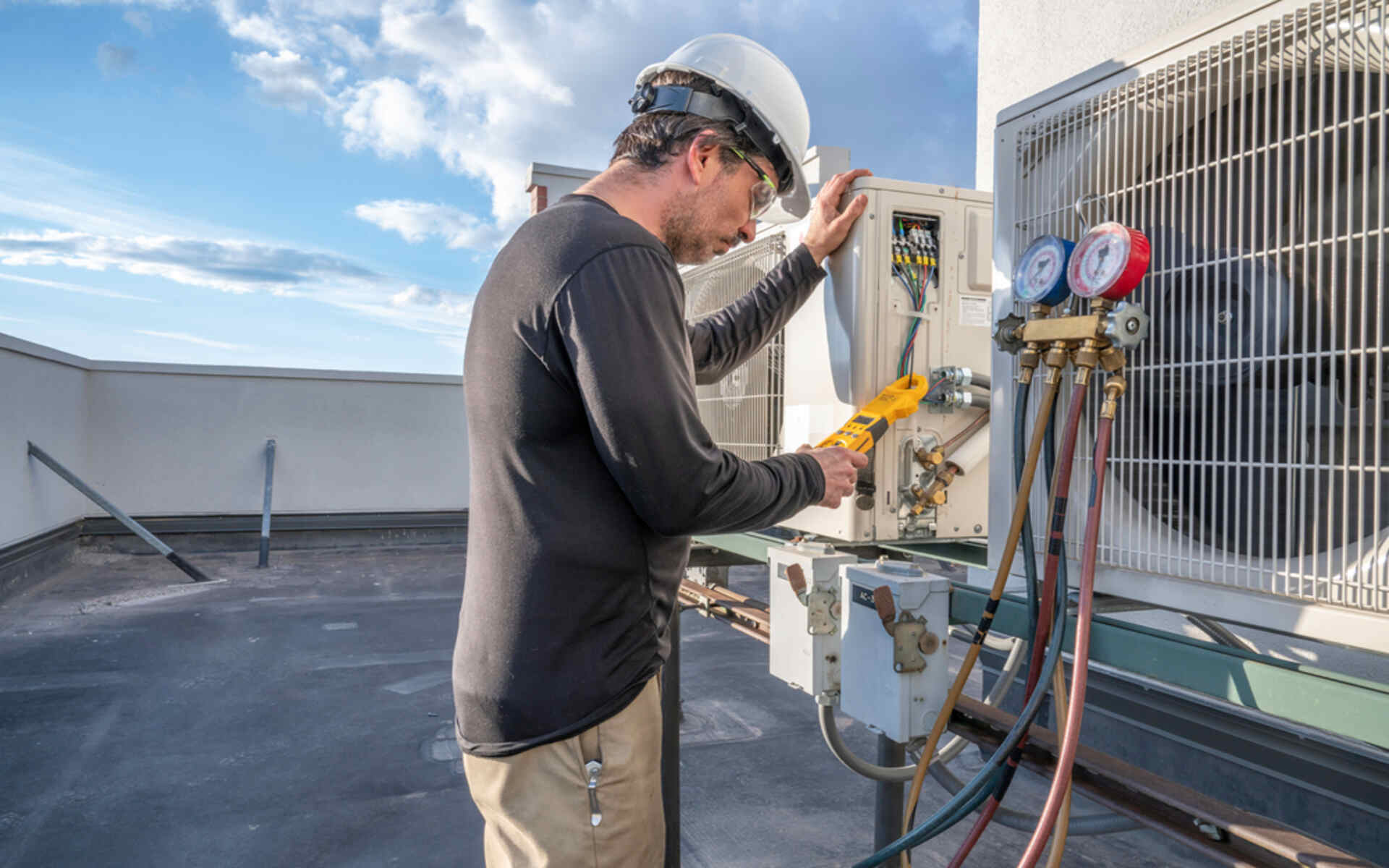Sourcing Wholesale HVAC Supplies to Boost Profit Margins
.jpg?width=1920&height=1200&name=shutterstock_2295719099%20(1).jpg)
Author: Brett Knox
August 13, 2024 - 4 MIN. READ
Each year, HVAC customers in the U.S. replace over 3 million heating and air conditioning systems. They also spend over $14 billion on repairing HVAC or installing new equipment. To best meet this HVAC demand, remain competitive in your pricing, and optimize your profit margin, you must strategically source your wholesale HVAC supplies.
Understanding the Significance of Supply Sourcing
The average HVAC contractor have bottom-line profits between 2.5% and 3.5%. Exceptional contractors exceed 10%. Reaching those heights, however, takes meticulous control of expenses.
The average price of some HVAC equipment has increased by 5%. For the average contractor, that could completely wipe out profits. To protect your business, you must approach the supply process strategically. Your sources must offer prices that will keep your margin up.
Identifying the Right Wholesale Suppliers
To find reliable wholesalers, you must study their pricing history. You should examine how much prices have risen and whether they align with other vendors. Check how much notice you get for changes. Look at added costs such as freight surcharges.
It's essential to monitor a wholesaler’s reliability. Do parts and equipment arrive on time and as ordered? Can the parts, refrigerants, and equipment offered meet the requirements of environmental regulations? Will replacement parts continue to be available?
You can also consider your potential supplier’s pricing model and determine if it fits your supply needs. Some common pricing models are:
- Cost-plus. Your supplier calculates their total costs and adds a profit margin. As their costs rise, their prices will rise along with them. You can expect prices to track with inflation.
- Value-based. This model depends on how much a buyer is willing to pay. In times of heavy demand, this model could cause prices to skyrocket.
- Fixed pricing. The price you get is independent of factors such as your suppliers’ fuel costs. If your supplier makes a serious pricing error, they may be unable to fulfill their obligations.
- Performance-based. This will come into play if your supplier offers superior service. The pricing will reflect its premium performance.
You should also find out how much the SEER 2 changes affected pricing.
Negotiating Favorable Terms and Pricing
You may find some margin by securing better terms and pricing from suppliers. Start from a solid knowledge base of what items cost. Your records should reveal what you’ve been paying and how much costs have risen over time. You can also obtain price lists and books from suppliers and distributors.
If your supplier is at the high end of the market, you have a basis for negotiating a discount. Your argument is simple: is it better for them to charge you less—or lose your business entirely? By building a solid relationship with a supplier, you are more likely to negotiate a favorable deal.
However, it is not easy to personally negotiate terms from multiple suppliers. The time and research it will take may cost you more than you can save on pricing.
Leveraging Technology for Efficient Sourcing
Fortunately, technology can help you order the supplies you need at prices that will maximize your profit. Through the use of an online marketplace, you can order the parts and supplies you need from multiple vendors in one transaction.
E-procurement tools will help you locate the supplies you require. They can monitor the supply chain for trends, allowing you to plan for shortages or price hikes.
You can also use inventory management software to track the supplies that you have and order the ones you need. Your jobs will go more quickly and efficiently with a well-stocked truck.
Data analytics can help you find many procurement advantages. By analyzing suppliers’ historical performance, you can negotiate better deals.
Knowing a vendor’s history will mitigate your risk. You can detect indications of serious supply interruptions, such as bankruptcies and delivery delays. Predictions of these challenges will help you avoid their effects.
Analytics can improve your procurement efficiency by automating routine purchasing. They will also increase your confidence and allow for faster decision-making.
Your supplier management will also improve by using analytics. By identifying superior performance, you can identify vendors that best meet your needs.
Streamlining the Procurement Process
To ensure your procurement goes as smoothly as possible, you can implement these strategies:
- Inventory management. Track parts and equipment to ensure your stock is on your truck when you need it. This avoids the high overhead of overstocking and shortage delays. Inventory management software helps to accomplish this process efficiently.
- Just-in-time (JIT) ordering. Planning your ordering based on your immediate needs eliminates the costs of overstocking and warehousing. Predictive analytics can be very helpful for this process.
- Automation of routine tasks. The right digital procurement tools can free you up to spend more time on your HVAC business.
- Inventory forecasting. Analytics predict future needs, allowing you to allocate the necessary financial resources.
Reducing Supply Chain Risks
The pandemic delivered a hard lesson to many businesses, including HVAC contractors. Kinks in the supply chain seriously compromise your profitability. You can minimize supply chain risks with three strategies:
- Diversifying suppliers. Determine alternate sources for your equipment and supplies.
- Building contingency plans. When a piece of equipment or supply is unavailable, think through how you can work around it in advance. This may involve accepting different types of equipment or using universal components.
- Monitoring market trends and disruptions. By understanding what is coming, you will be better prepared to use alternate suppliers and implement contingency plans.
Ensuring Quality and Compliance
Here's a hard fact of our ultra-connected world: customers read reviews. In fact, 97% report that reviews impact their decisions. The last thing you want is a report of a failed installation. Using anything but high-quality HVAC supplies can inflict damage to your business that you will find very difficult to repair.
You know well how tightly HVAC is regulated. You must use the correct refrigerants, install units that meet SEER requirements, and adhere to strict safety standards.
To comply with regulations, you must be able to source the right equipment and supplies. Effective procurement tools will put them on your truck.
To maintain quality control in the supply chain, deal with suppliers you know you can trust. Keep updated on regulations and plan far enough ahead to adhere to them.
Win more jobs and make more profit during inflationary times
Increase your margins by paying less for IAQ and HVAC equipment, materials, and rental equipment.
How? Join a purchasing program like Raiven. Companies like Raiven combine the buying power of all their members and negotiate deep discounts, service terms, and supply chain priorities so you pay less for HVAC equipment, supplies, and business essentials, and you don’t have to squabble with suppliers.
Gain access to pre-negotiated discounts of 7%-30% from industry-leading manufacturers and distributors like Alpscontrols, American Air Filter, Carrier, Ferguson, Ford, Grainger, Graybar, Home Depot, Koch Filter, Schneider Electric, Sunbelt Rentals, United Rentals, and more!
Contact Raiven if you’d like to learn more about saving money and in the interim, be sure to read our Supply Chain Outlook focused on the electrical ecosystem that can directly impact your HVAC business.


